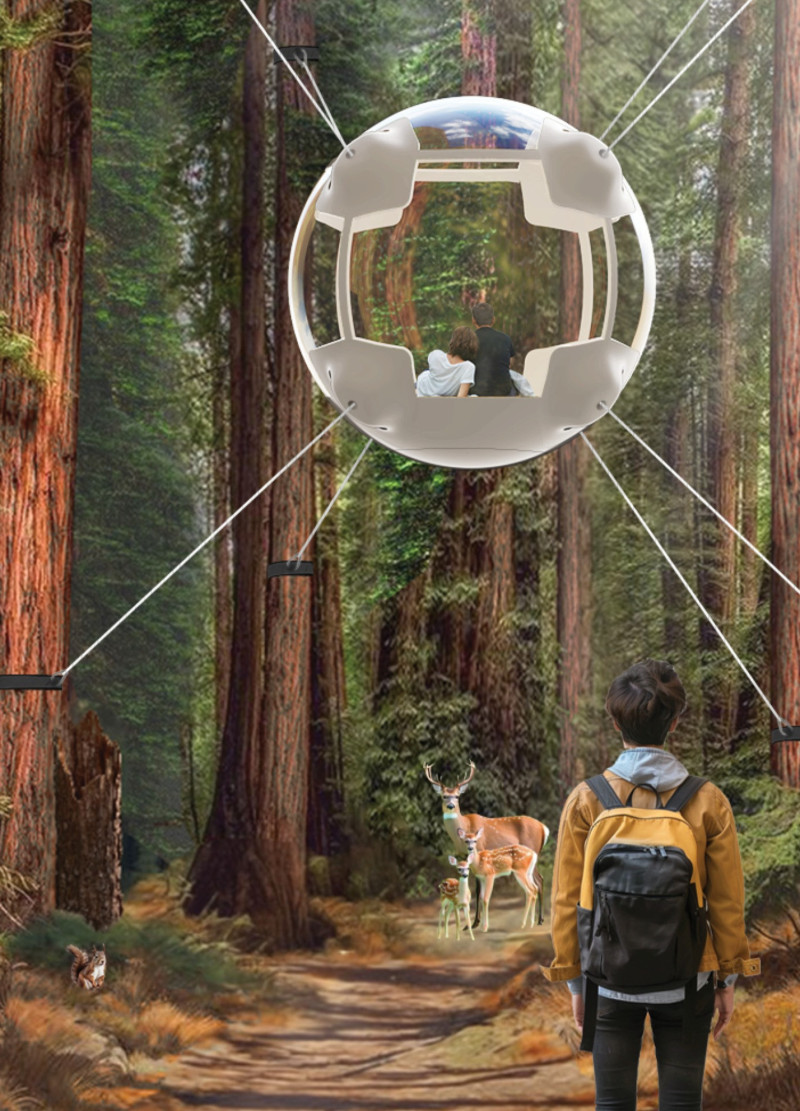5 key facts about this project
Upon entering the project, one is greeted by an open and airy environment. The design includes high ceilings and large, well-placed windows that invite natural light into the space, fostering a connection with the outdoors. This relationship between the interior and exterior is a pivotal element of the project, as it enhances the experience of those who inhabit the space while reducing the reliance on artificial lighting during the day.
The layout of the project is strategically organized to facilitate movement and accessibility. Clear circulation paths guide users through various functional areas, ensuring that each space is easily accessible. The thoughtful arrangement allows for dynamic interactions, promoting a sense of community without sacrificing the privacy of individual spaces. This design approach underscores an understanding of the diverse needs of users, catering to various activities ranging from quiet contemplation to collaborative gatherings.
Materiality plays a crucial role in this architectural design, with a carefully curated selection of materials that reflect both durability and aesthetic coherence. The project utilizes a combination of concrete, glass, and wood, each chosen for their respective qualities. Concrete serves as a foundational element, providing structural integrity and a sense of permanence. Meanwhile, the glass elements facilitate transparency, blurring the lines between the interior and the exterior, while allowing occupants to enjoy views of the surrounding environment. The warm tones of wood introduce a sense of warmth and comfort, enhancing the inviting atmosphere of the spaces.
The façade of the building is particularly noteworthy, incorporating design features that enhance both functionality and visual interest. The interplay of materials and textures creates an engaging visual narrative, with features like overhangs and balconies that not only serve practical purposes, such as shade and ventilation, but also contribute to the overall aesthetic appeal. These design choices reflect a commitment to sustainability, as they encourage passive energy strategies and reduce the building's environmental footprint.
In terms of architectural ideas, the project demonstrates a unique approach to sustainable design. The incorporation of green roofs and walls showcases an awareness of the environment, promoting biodiversity while improving energy efficiency. Rainwater harvesting systems and solar panels are integrated into the design, further minimizing its ecological impact. This attention to sustainability not only serves the immediate function but also communicates a broader message about architectural responsibility in the face of global environmental challenges.
The project embodies a unique synthesis of innovation and tradition, aware of its geographical context and the cultural values of the community it serves. Local influences can be seen in the design motifs, which pay homage to traditional craftsmanship while employing modern technologies. This duality enriches the architectural narrative, creating a dialogue between past and present that resonates throughout the space.
As you explore this project further, consider delving into the architectural plans and sections that reveal the meticulous thought process behind the design decisions. Observing the architectural designs will provide greater insight into how each element has been purposefully crafted to improve the overall user experience. The architectural ideas encapsulated within this project illustrate the potential for architecture to enhance lives while respecting the environment and communal values.
For a comprehensive understanding of the unique features and thoughtful intentions behind this architectural endeavor, it is encouraged to review the architectural details and presentations that capture the full scope of the project. By engaging with these resources, readers can appreciate the depth and significance of the design, fueling a deeper conversation about the role of architecture in contemporary society.


 Sibinesh Rajendran Rajendran
Sibinesh Rajendran Rajendran 




















